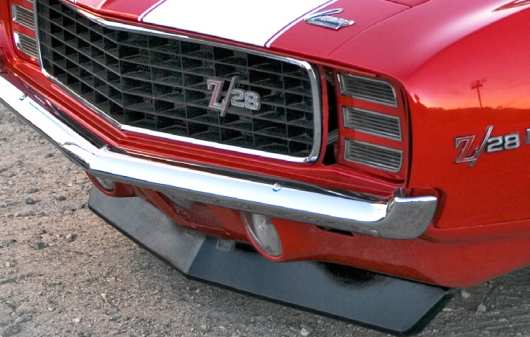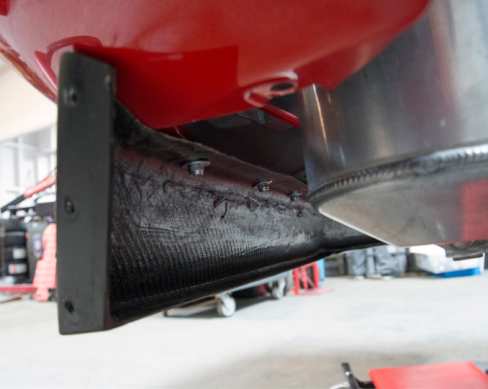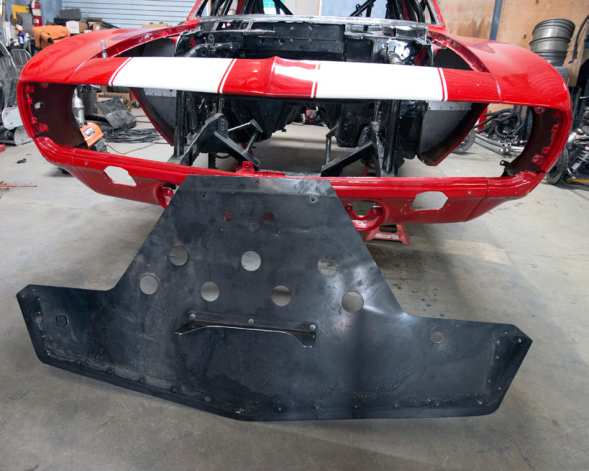Splitter / Valance

From the start in 1988, Big Red used a factory front airdam. In the 1989 Silver State Classic Challenge, RJ piloted Big Red to an earth-shattering speed of 222 mph with a stock front airdam. GM tested its airdam for use in Trans-Am Series racing on their Z/28s, but it probably never imagined it would be effective enough to run 222 mph.
In 2008, Big Red received a small splitter (the flat aluminum plate under the airdam that extends past the face of the airdam). Since the splitter extends past the face, air hitting the face pushes down on the splitter, creating downward pressure (downforce) on the splitter. Big Red ran the Texas Mile in March 2011 with a factory airdam above the splitter. This event showed the team that Big Red’s aerodynamics could use some improvement. Before heading to the Mojave Mile in May 2012, Tim designed and built a wider, custom carbon-fiber airdam by using an original
airdam as a template. At Bonneville in 2013, the team experimented with differently shaped end caps to push air away from the front tires. After their runs on the salt, the guys fabricated new end caps to achieve even better results next time.
Dave designed the splitter from 0.090-inch aluminum plate to act as a partial belly pan that runs from the bottom of the airdam to the front suspension crossmember. This design is strong and takes impacts well. The front airdam mold is at the shop. They try to keep at least one spare airdam on hand at all times. The ends of Tim’s design curve around the front lower valance and fender extensions. It redirects more air away from hitting the front tires at speed. A view of the backside shows the carbon-fiber strands. Dave designed an extra support bracket for the splitter to attach to the lower radiator crossmember. The splitter gives enough clearance for the tires and radius rods to articulate.
The aero end caps are installed last. Since Dave created these as separate bolt-on pieces, he has been able to fabricate different end caps over the years as he dials in the aerodynamics. They can be increased in size to reduce drag by pushing air


away from the front tires. They designed two splitters, one short one and one long one (protruding further in front of the face of the airdam). Historically, the
crew installed the short one for land-speed runs and the longer one for road course runs for more downforce. The assumption was that the longer one would create too much downforce and drag at high speeds. The wind-tunnel tests proved that the longer one should be used all the time. An extra strip was clamped on for that wind-tunnel test to see how the longer one worked. There were a lot of undulations in the roadway at Pikes Peak, so the team added small, sacrificial black Delrin pucks on the sides of the splitter for those times the splitter would contact the roadway.